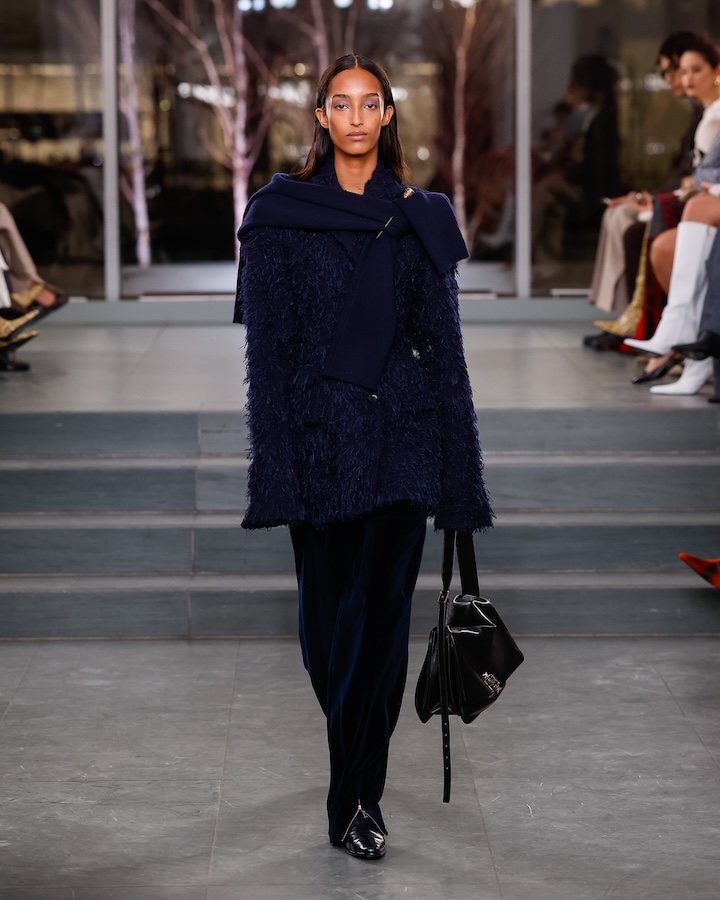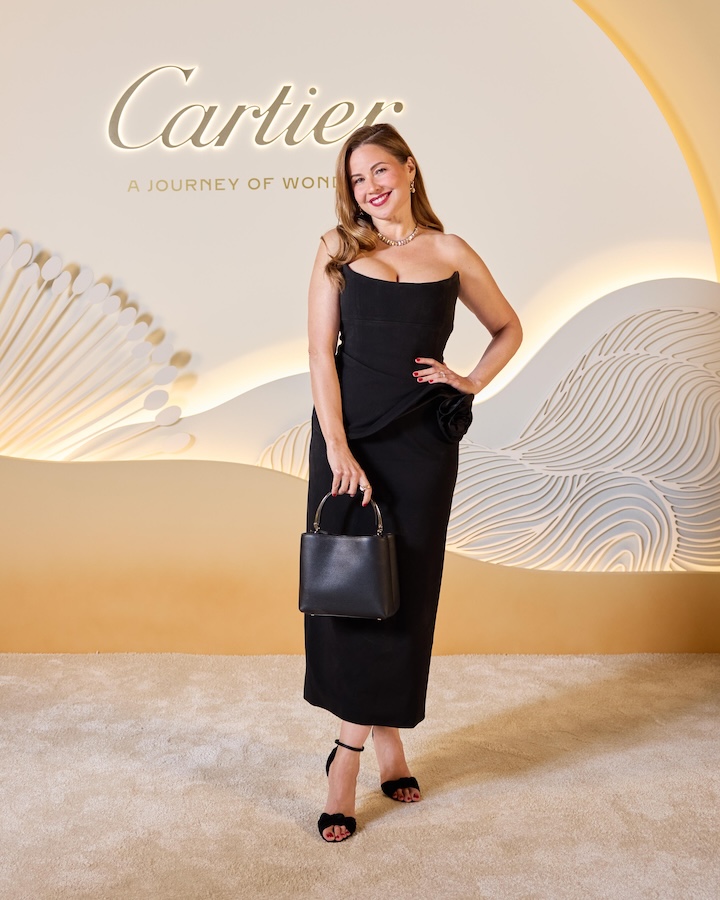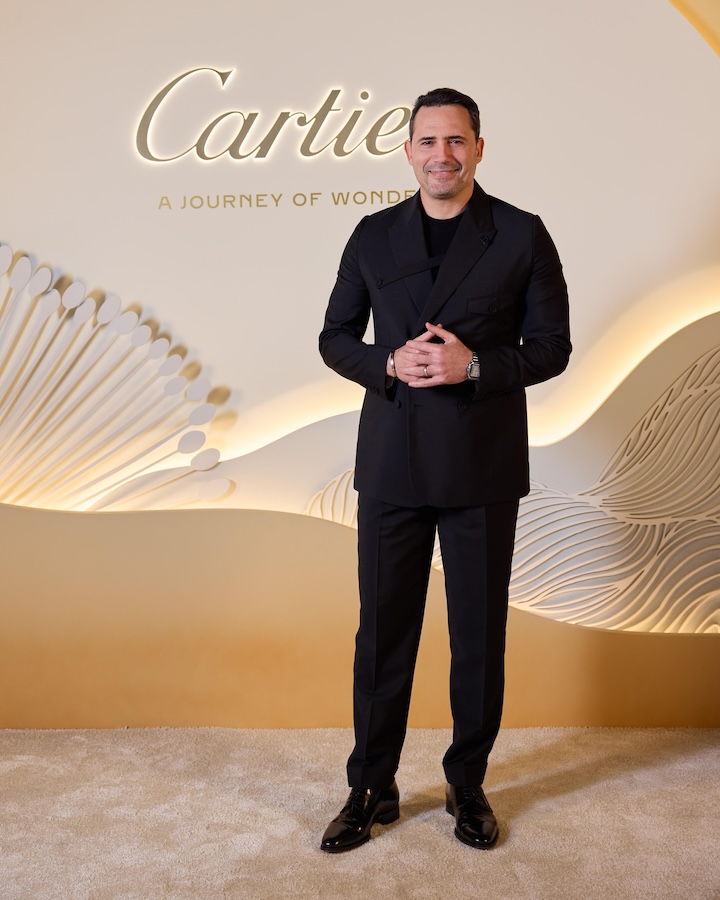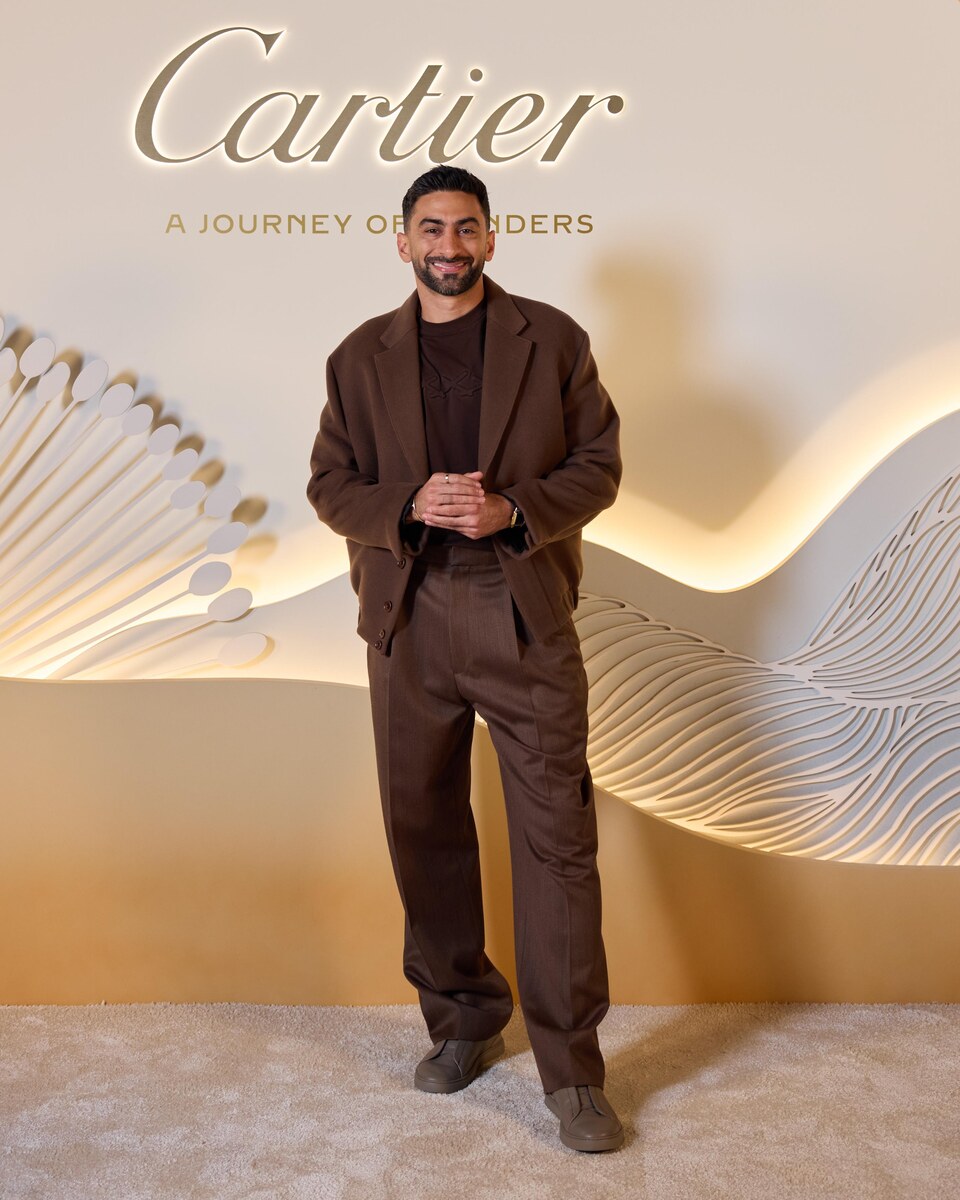Saddek Wasil

‘Untitled (Open Book With Hands)’
On June 12, London’s Sloane Street Auctions will hold its Summer Fine Art auction, which, it says, will be ‘dominated’ by works from the collection of the late Dr. Mohammed Said Farsi, the former mayor of Jeddah who died in 2019 and is credited with turning the coastal city into an “open-air museum.” Well-known as a lover of art, Farsi supplied numerous “landmark” auctions with “millions of pounds worth of Middle Eastern and Western art over the past two decades,” according to Sloane Street Auctions.
“Dr Farsi’s collection must have the most widespread appeal for collectors with its extraordinarily eclectic offering,” Daniel Hunt of Sloane Street Auctions said in a press release. “His impeccable taste and astute eye, coupled with his standing as a leading figure in modern Arabia make this catalogue of treasures a must for serious collectors in both East and West.”
Among the gems on offer on June 12 are a few works by artists from the Kingdom, including this bronze piece from Makkah-born sculptor Saddek Wasil. According to the Edge of Arabia website, Wasil’s works are “not to be understood as a present state, but hold the promise of future success in overcoming … boundaries.” The work is expected to fetch up to £1,000 ($1,280) at the auction.
David Hockney
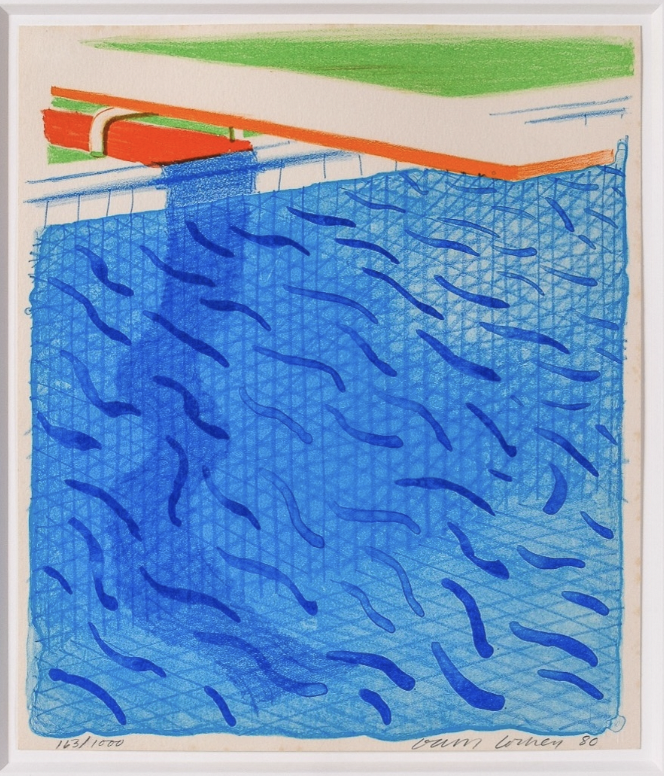
Lithograph from the ‘Swimming Pool’ series
Farsi was equally interested in both regional and international artists, and this David Hockney lithograph shows his talent for identifying great work. A painting from the same “Swimming Pool” series — “Portrait of An Artist (Pool With Two Figures)” is the most expensive painting ever sold by a living artist, garnering $90 million in 2018. The 86-year-old English painter and photographer is one of the leading lights of the pop-art movement, and the swimming pool became his muse. Talking to Diane Hanson in 2009, he explained that he was flying over Los Angeles in the 1960s, when “I looked down to see blue swimming pools all over and I realized that a swimming pool in England would have been a luxury, whereas here they are not.” Hockney saw swimming pools as symbols of the American Dream and has continued to paint them ever since.
Seif Wanly
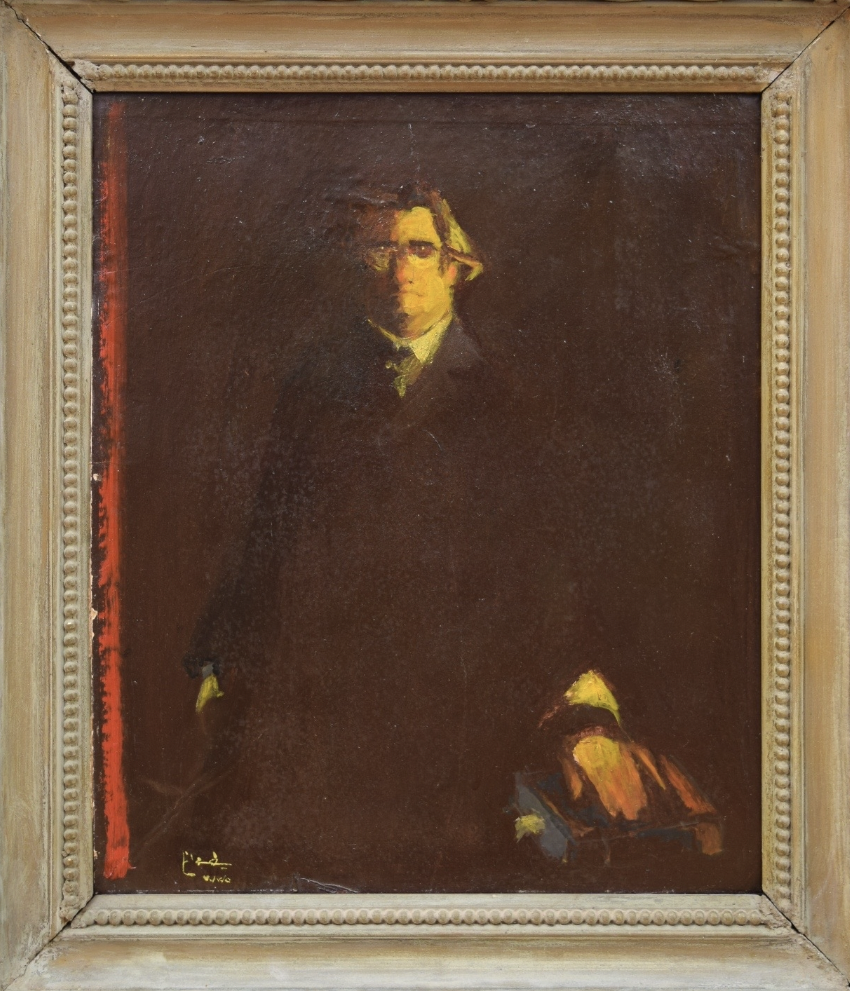
‘Dark Self’
Farsi is especially renowned for his collection of works from the pioneers of Middle Eastern, and particularly Egyptian, modern art. The lots from his collection on sale at Sloane Street Auctions include 48 works by the brothers Seif and Adham Wanly — two of the most significant modern Arab artists. This work from 1970 is one of several self-portraits by Seif that will be up for sale.
The Wanly brothers came from an aristocratic family and were introduced to art early. Seif studied under the Italian painter Ottorino Bicchi in Alexandria. In 1935, the brothers founded the Hall for Fine Arts in Alexandria and Seif’s atelier became a cultural meeting place. Art historian Nadia Radwan has noted that, following Adham’s death in 1959, “which affected him profoundly, he introduced a darker palette of colors and shades in his paintings,” such as those seen here.
Abdul Hazi El-Gazzar

‘Portrait of an Italian Physician’
Although he died young, aged just 40, El-Gazzar is widely recognized as one of Egyptian modern art’s most significant figures. His biographer Dr. S. Sharouny, wrote in 2007 that he “left behind a national artistic wealth that has only recently been acknowledged and appreciated.” El-Gazzar studied in Rome, which is likely where he met the subject of this portrait. This early work hints at El-Gazzar’s later choices of depicting, as Sharouny writes “ordinary working-class people … and through his strong line and color (giving them) a certain nobility.”
‘Kiswah Panel’
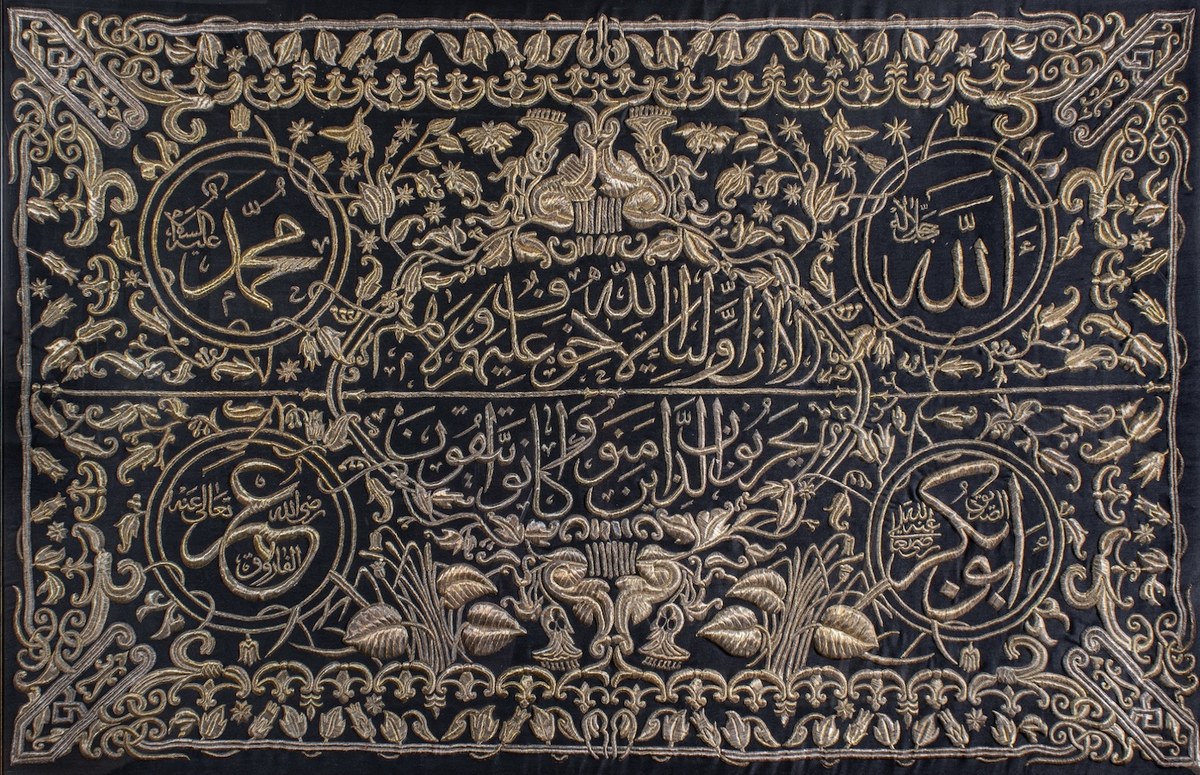
According to Sloane Street Auctions, this silver and gilt appliqué panel of the Kiswah (the cloth which covers the Kaaba, the sacred stone building at the heart of Makkah’s Great Mosque) from Farsi’s collection was likely a gift from King Fahd.
Mohamed Nagy

‘A Rural Landscape in France’
The Egyptian painter is another of the pioneers of the region’s modern-art movement. He reportedly studied under Claude Monet at the Academy of Fine Arts in Florence, Italy, and was clearly inspired by the European Masters, as this painting shows. He returned to Egypt after the outbreak of World War I, and later became the director of Alexandria’s Museum of Modern Art.









